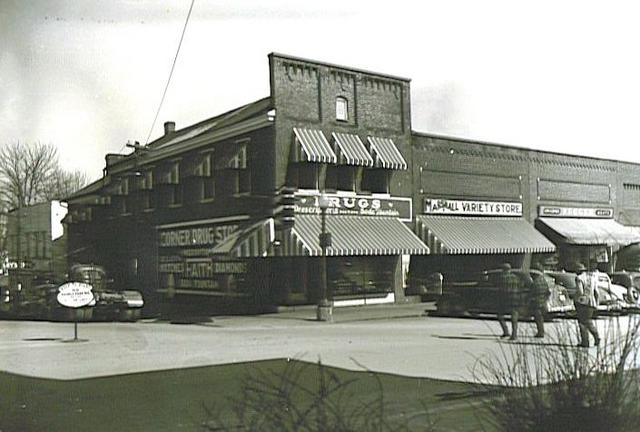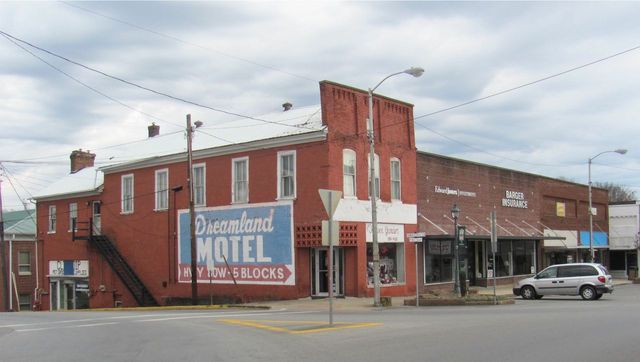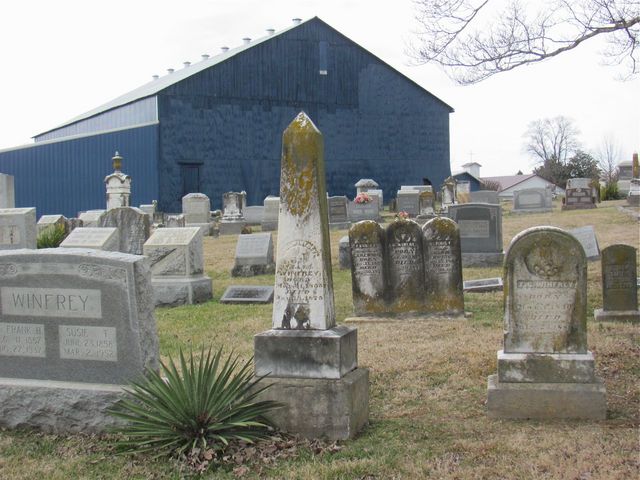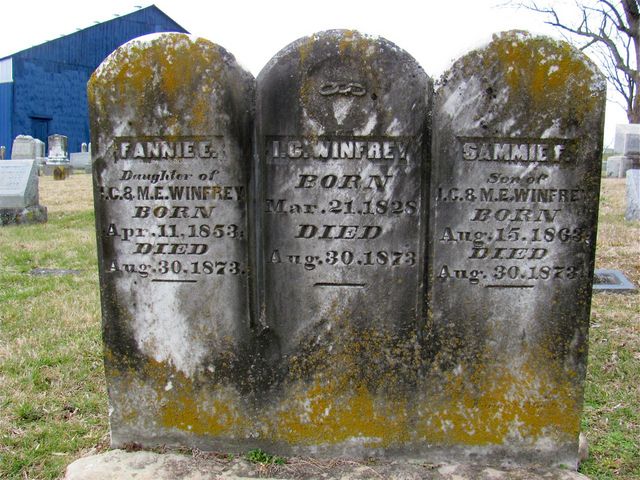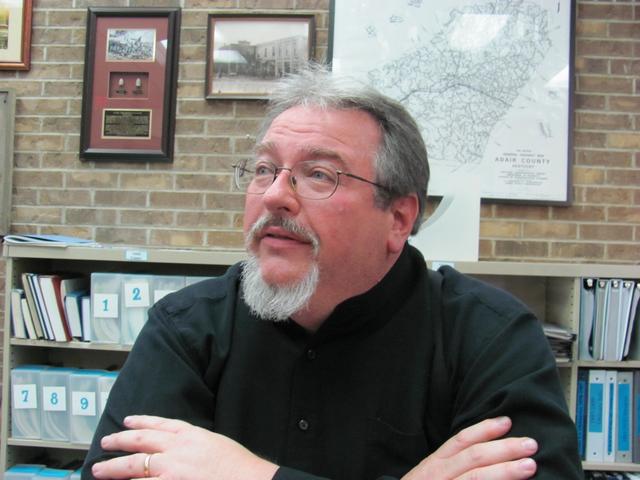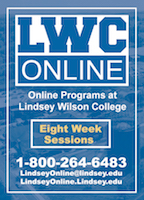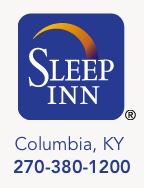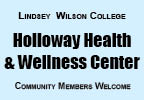| ||||||||||
Dr. Ronald P. Rogers CHIROPRACTOR Support for your body's natural healing capabilities 270-384-5554 Click here for details 


Columbia Gas Dept. GAS LEAK or GAS SMELL Contact Numbers 24 hrs/ 365 days 270-384-2006 or 9-1-1 Call before you dig Visit ColumbiaMagazine's Directory of Churches Addresses, times, phone numbers and more for churches in Adair County Find Great Stuff in ColumbiaMagazine's Classified Ads Antiques, Help Wanted, Autos, Real Estate, Legal Notices, More... 
|
The Winfrey House Hotel & an Epidemic, 1873 in Columbia, KY Many in Adair County know the most vague details of the tragic outbreak of cholera in 1873. This story by Adair County Historian Mike Watson gives full description of the epidemic, with fascinating details including the wedding of a dying local physician to the girl he had "been seeing"- the ceremony performed with the dying groom upstairs at his farm home about three miles from Columbia, his bride, who was carrying his child, standing in the front yard of the home. - Click on headline for story with photo(s) By Mike Watson Adair County Historian The building on the corner of the Public Square and Campbellsville Street, long known to many as the Collins Drug Store, is the only original building on the Square. In the 1870s it was operated as a hotel, the Winfrey House or Winfrey Hotel. It was at this hotel that the tragic cholera epidemic erupted in August 1873. Here is a little history of the events that unfolded. The Asiatic cholera epidemic that raged through central Kentucky in August of 1873 was one of the worst on record in this county. The disease had spread across much of the eastern United States and then into central Kentucky. Medical professionals did not know how to combat this disease. Many lives could have been saved had certain basic, modern precautions been taken. Lebanon, in Marion County, was then a small country town on the Knoxville branch of the Louisville and Nashville railroad. This railroad was the closest freight line to Adair County. This is where our cholera originated, though it had been in the general area of central Kentucky for some time. On August 26th the Marion County Fair opened. Such events regularly drew large crowds from surrounding counties. Because of the popularity of the fair and, obviously because of the revenue it would bring the town, there was no publicity about the several cholera cases in the vicinity. As a matter of fact, a handbill was circulated in and around Marion County that stated there was no threat of cholera. There was little water available at the site of the fair. A well close by was selected from which fresh water could be easily carried to the fairgrounds. However, this well was in close proximity to houses where several cholera victims had recently lived and died. No one thought the water would be contaminated. On August 27th there was a great rain. This flushed human waste into the well, which was in a low-lying area in the contaminated region. On the night of the 29th and morning of the 30th at least thirteen cases developed, twelve died within ten hours of the onset of their particular case. For two weeks cholera was at an epidemic stage in Marion County. In Adair County the disease was largely confined to one part of the town of Columbia because the town was built upon a well-drained spot. The Winfrey House, a hotel located on the Public Square, operated by Israel C. Winfrey, was the location of the outbreak. Many of the men and boys of the town commonly used a large privy at the rear of the hotel's stable, adjacent to the hotel. In August 1873 the town's streets were strewn with debris of all types; most privies were built on the surface; stables, pigsties and chicken coops were unclean. Local physicians had tried to get the townsfolk to clean up their properties and some had complied, but many resisted. The stable lot and surrounding area had not been touched. On August 29th a black youth, aged about fourteen, who had been working at the Marion County fair, returned to Columbia and went to work at the Winfrey House stable. He was ill when he arrived in town and made use of the privy several times that night. A black man in charge of the stable was struck with cholera early on August 30th and was taken into a basement room of the hotel. He died within forty-eight hours. About 8:00 a.m. on the 30th the black youth was found collapsed in the stable. He died in a few minutes. Later that day Fannie E. Winfrey, a twenty-year-old daughter of Mr. Winfrey, became ill and died within ten hours. Mr. --?-- who lived on Casey Creek, about fifteen miles from Columbia, was taken ill. He had been in town on the 29th and had been seen going into the fateful privy. He lived but six hours. His young daughter soon contracted it and lived only about ten hours. Mr. Winfrey was attacked by the disease on August 31st and died within twelve hours as did another Winfrey child, Sammie F., a ten year old. On the same day five members of his family and six hotel boarders contracted cholera as well. Within eighteen hours eight had died. Mr. P.W. Vaughn, a Civil War veteran, moved his wife from Columbia to Cane Valley for safety. He then returned to help with the sick, but was soon summoned to his wife's side, she having contracted the disease. Circuit Court was in session and there were a large number of out-of-town people registered at the hotel in addition to the usual residents. All who could, left the hotel on the 31st. On September 1st four former hotel boarders became ill and all died within sixteen hours. One victim was Dr. Hector Owens who had a house in the county, but whose rear office windows opened upon the stable yard. Colonel Robert Miller, age 77, an elder of the Columbia Methodist Church, who left the hotel and gone to Griffin Springs, near Cane Valley, was taken ill and died within sixteen hours, on the 3rd. A black man who had nursed the first victim during his illness, died on this day. The Winfrey House was closed on the 1st of September. The stable was abandoned, the privy disinfected and filled with fresh soil. On the same day, Mr. Vaughn, now in Cane Valley, was taken with cholera. His wife survived, he did not. A fifty-year-old man who had been in town on the 30th came down with the disease at home on Green River and died after fourteen hours. A little boy who frequented the stables contracted cholera on September 2nd, but recovered. A father and son who had nursed the sick and made coffins for some of the dead, both came down with the disease on the 2nd. The father, aged 70, died, the son recovered. A farmer who lived north of town, but who had been seen at the stable on the 31st, died after a twenty-four hour illness. A man who had been at the hotel on the 31st, but left for Campbellsville, died at a hotel there on the 2nd. There were no new cases for several days. Then, on September 6th, a daughter of Mr. Winfrey became ill, but recovered. Two days later four people came down with mild cases and recovered. On the 10th an aged man and wife about two miles from town contracted cholera and she died. It was not determined how they had been exposed. On September 20th a seventy-five year old man contracted cholera and died in a few hours, his wife died on the 23rd. It was later learned that the human waste of the victims was not sterilized to kill the disease. A young man who attended Mr. Winfrey later stated that the waste was dumped out the window into a debris-strewn lane which separated the hotel from the detached kitchen. During the night of Saturday, August 30th, Commonwealth's Attorney, Major A.M. Adair, and Circuit Judge, Thomas T. Alexander, sat up most of the night to nurse a sick friend at the Winfrey House. The next morning they started for Albany, the term of Circuit Court was to open there on Monday morning. Major Adair was stricken with the disease along the road and, with help from Alexander, made it to the isolated home of Mr. Kelly, eight miles from Albany. He lay near death for several days, attended by a kinsman, Dr. Waggener from Bowling Green, who was summoned. A black man, whose name is not recorded, was attacked with cholera on September 5th in Boyle County, the day after his arrival there. He had been a servant to Col. Miller, of Columbia, had nursed him during his illness, and prepared his body for the grave. After Miller's burial, the man walked to the home of friends in Boyle County, a few miles from Parksville. He died after about eight hours. The following story was told about Dr. Hector Owens and the cholera: Dr. Hector Owens attended the cholera victims at the Winfrey House Hotel for several days. When he felt the symptoms overcoming him, he got on his horse and headed to his farm home, about three miles from town. As a physician, he may have thought he could administer to himself and at the same time not infect others. As he rode out the narrow track to his home, he encountered a little boy in the road. He stopped his horse and told the boy to go way out into the woods until he [Owens] passed on his horse, and then to go home. The Doctor went home, went upstairs and to bed. Word was spread among friends and neighbors of his infection with the disease and help came. He had been "seeing" a young lady in the area, perhaps from Columbia, and she was sent for. She came, but he would not allow her to come into the house. She stood in the yard and a minister is reputed to have performed a marriage ceremony with her there and the Doctor in bed. He died soon after. As some later said, the Doctor made three major commitments on his last day: He married, accepted Christ, and died. No marriage record can be found in the Adair County records of this marriage. Perhaps it was thought there was no real need for one since the groom died so soon. But... Tradition also states that the young lady in question was with child. She had the child, a son, perhaps here or in Virginia, where she reportedly lived in later years. Dr. Owens had a tombstone over his grave at one time. Local lore has it that a young man came to Columbia in the late 1890s with a wagon and took the stone back to Virginia with him in order to place it beside the grave of his mother. - Mike Watson This story was posted on 2013-02-10 04:32:51
Printable: this page is now automatically formatted for printing.
Have comments or corrections for this story? Use our contact form and let us know.
More articles from topic Local History:
Generation Charts requested for Roots N Branches Vol 3 Deering & Myrtle Fletcher grandson: Stopping at OG's a treat Memories of Chance, KY and O.G. Rowe: Mother's teacher Memories of O.G. Rowe, his store at Chance, KY Perhaps a note can be added for the beloved bell-ringer Bell story elicits memory of significant moment in Columbia life Remembering Jimmy Combest: From near neighbor The Story of John McQueary More on Spinning Wheel with initials O E Taylor underneath North side of 100 block of E. Main Street completely restored View even more articles in topic Local History |
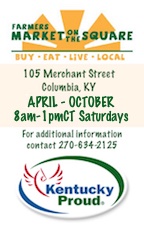
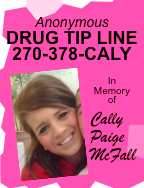

|
||||||||
|
| ||||||||||
|
Quick Links to Popular Features
Looking for a story or picture? Try our Photo Archive or our Stories Archive for all the information that's appeared on ColumbiaMagazine.com. | ||||||||||
|
Contact us: Columbia Magazine and columbiamagazine.com are published by Linda Waggener and Pen Waggener, PO Box 906, Columbia, KY 42728. Please use our contact page, or send questions about technical issues with this site to webmaster@columbiamagazine.com. All logos and trademarks used on this site are property of their respective owners. All comments remain the property and responsibility of their posters, all articles and photos remain the property of their creators, and all the rest is copyright 1995-Present by Columbia Magazine. Privacy policy: use of this site requires no sharing of information. Voluntarily shared information may be published and made available to the public on this site and/or stored electronically. Anonymous submissions will be subject to additional verification. Cookies are not required to use our site. However, if you have cookies enabled in your web browser, some of our advertisers may use cookies for interest-based advertising across multiple domains. For more information about third-party advertising, visit the NAI web privacy site.
| ||||||||||

























